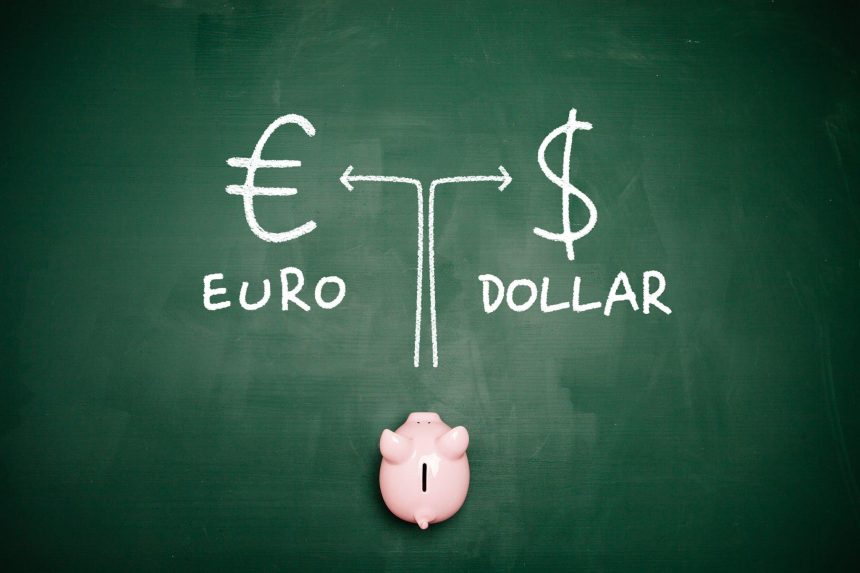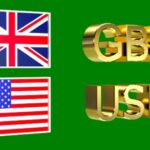EURUSD Bulls Regain Control Despite Dovish ECB Bets and Lingering Trade Risks.
EURUSD pair staged a robust rebound during Thursday’s European session, climbing toward 1.1385 after briefly dipping near the 1.1300 handle earlier in the week. The recovery comes despite mounting expectations that the European Central Bank (ECB) is on track to initiate a rate-cut cycle as early as June. However, a confluence of better-than-expected German data, a slightly more positive tone in EU-US trade talks, and a pullback in the US Dollar have supported the Euro’s upside.
Euro Strengthens Despite ECB’s Dovish Tone
At the heart of the market dynamics is the growing conviction among investors that the ECB will begin monetary easing soon. Speaking on Wednesday, Bundesbank President and ECB Governing Council member Joachim Nagel reiterated that inflation in the Eurozone is expected to return to the ECB’s 2% target by the end of 2025. This confidence in inflation convergence has led markets to fully price in a 25 basis point cut in June.
Yet, what’s particularly striking is that the Euro continues to gain ground in forex markets despite these dovish signals. This counterintuitive move suggests that markets may have already priced in the ECB’s shift, or that other macroeconomic and geopolitical forces are temporarily overriding interest rate differentials.
Further reinforcing the dovish narrative, Finnish central bank governor and ECB policymaker Olli Rehn suggested that the central bank “shouldn’t rule out a larger interest rate cut,” opening the door to a more aggressive easing path if economic data deteriorates.
Germany’s Fragile Resilience Buoys Sentiment
Despite the gloomy outlook painted by Nagel—who warned of the possibility of a mild German recession for the third consecutive year—recent economic indicators from Europe’s largest economy show signs of tentative resilience. On Thursday, the IFO Business Climate Index for April surprised to the upside, printing at 86.9 compared to expectations of 85.2. The Current Assessment and Expectations components also beat forecasts, indicating that businesses are slightly more confident than previously thought.
Though these figures don’t mark a dramatic turnaround, they suggest that the German economy may not be as weak as feared. This glimmer of optimism, coupled with expectations that ECB easing could soften financial conditions across the Eurozone, has helped lift the Euro off recent lows.
EU-US Trade Outlook: A Key Swing Factor
In addition to monetary policy, the EURUSD pair has been influenced by developments in the transatlantic trade front. Since early April, negotiations between the European Union and the United States have shown cautious progress. EU Trade Commissioner Maros Sefcovic has proposed a “zero-for-zero tariffs” deal covering cars and industrial goods—a move designed to defuse trade tensions before they escalate further.
On Wednesday, German Finance Minister Joerg Kukies expressed hope that a trade agreement could be reached, but warned that countermeasures were ready should talks collapse. “The position is very simple: Plan A is that we want an agreement… and Plan B is if this doesn’t work, we will use countermeasures,” Kukies said in an interview with Deutschlandfunk radio.
The EU’s diplomatic approach appears to have struck a chord with Washington. US Treasury Secretary Scott Bessent admitted that current tariff levels—up to 145% on Chinese goods and around 125% on EU imports—are unsustainable. This has raised market hopes that the US administration might scale back tariffs, offering relief to transatlantic exporters and boosting the Eurozone’s growth prospects.
Dollar Dips as Risk Appetite Recovers
The other half of the EURUSD equation is the US Dollar, which has lost ground after staging a modest two-day recovery earlier in the week. The US Dollar Index (DXY) fell back to 99.25 on Thursday, having briefly tested the 100.00 level.
Traders are paring back their bullish Dollar bets amid renewed hopes that the US and China could also reach a truce in their tariff battle. President Donald Trump, in remarks on Tuesday, hinted that while tariffs may not drop to zero, they are unlikely to stay at punitive levels. This has encouraged risk appetite, reducing demand for safe-haven assets like the US Dollar.
At the same time, concerns are growing over the health of the US economy. A flash S&P Global PMI report revealed that American firms are hiking prices at the fastest pace in over a year, in response to tariffs and supply bottlenecks. This renewed inflationary pressure complicates the Federal Reserve’s efforts to ease policy as growth slows. The data suggests the Fed may face a difficult balancing act—cutting rates enough to support growth without reigniting inflation.
Technical Analysis: EURUSD Eyes 1.1400
Technically, the EURUSD pair has staged an impressive recovery after finding solid support near the 1.1300 psychological level. The move toward 1.1385 breaks above the 20-period simple moving average on the four-hour chart, signaling short-term bullish momentum.
A sustained break above 1.1385 could pave the way for a retest of the key 1.1400 level, followed by March highs near 1.1430. On the downside, initial support is seen around 1.1320, and a decisive break below this zone may expose the pair to deeper losses toward 1.1280.
Momentum indicators such as the RSI and MACD are back in positive territory, confirming the bullish bias in the short term.
What’s Next for EURUSD?
The near-term trajectory of EUR/USD will hinge on three key developments:
1. ECB Policy Signals: Investors will watch for further guidance from ECB officials. If policymakers begin pushing back against aggressive easing bets, the Euro could gain further.
2. EU-US Trade Talks: Any concrete progress toward a zero-tariff deal could give the Euro a material boost. Conversely, if talks stall or tariffs increase, the EUR could suffer.
3. US Data and Fed Outlook: Inflation and employment figures will be critical in shaping Fed expectations. Softer data could limit USD strength, while hawkish commentary from Fed officials may cap EURUSD gains.
Conclusion
Despite the looming prospect of ECB rate cuts, the Euro is showing surprising resilience, buoyed by improving German business sentiment and a more constructive tone in EU-US trade discussions. Meanwhile, the US Dollar has retreated on optimism over trade de-escalation and concerns about domestic inflation. As long as risk appetite holds and the EU avoids major trade setbacks, EURUSD may remain on a bullish path in the short term.
https://voiceoftraders.com/analysis/gold-steadies-above-3300-as-trade-tensions-resurface







